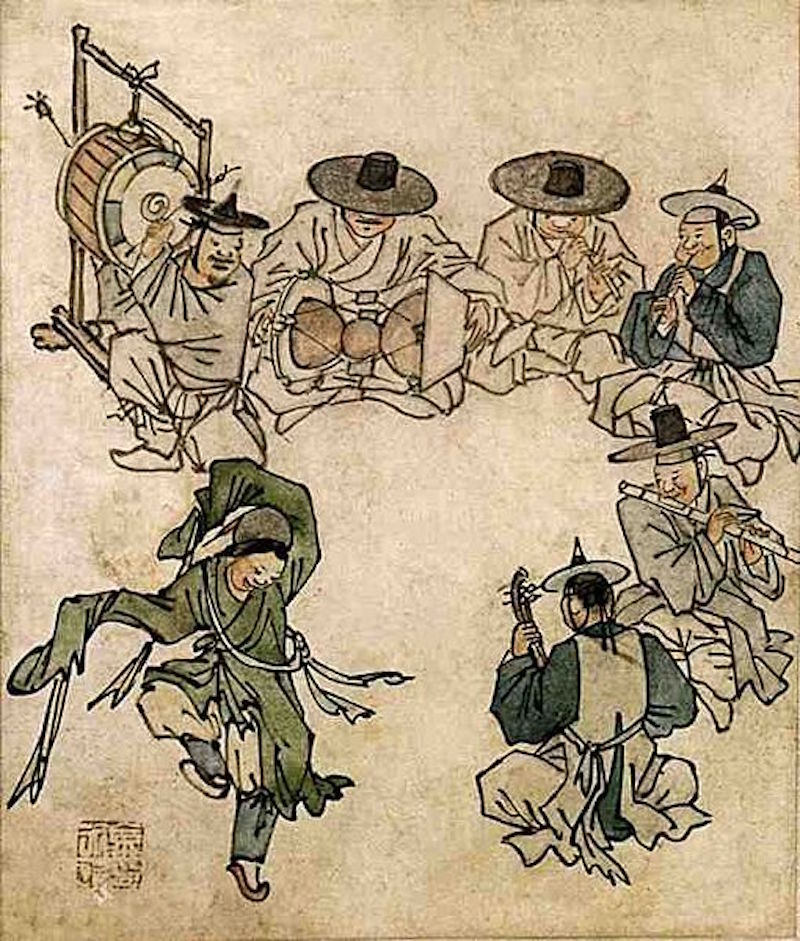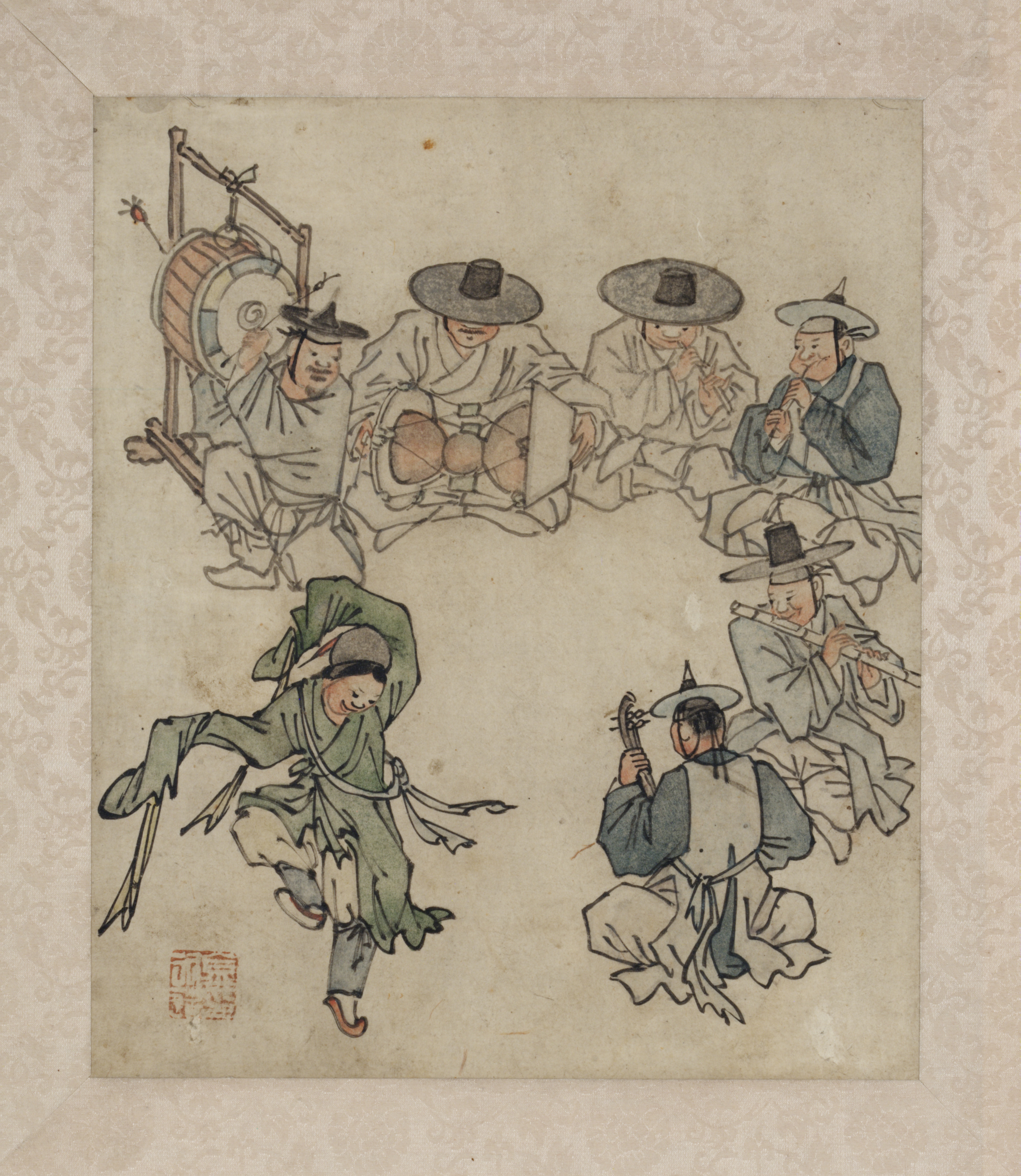Kim Hong-do, most often styled Danwon, was a full-time painter during the Joseon period of Korea. He was both a pillar of the establishment and a key figure of the new trends of his time, the “true view painting.” Kim Hong-do was an exceptional artist in every field of traditional painting, even if he is mostly remembered today for his depictions of the everyday life of ordinary people, in a manner analogous to the Dutch Masters. Born into a family of officials, Kim was early appointed to official rank and made a member of the royal art academy. Nevertheless, he was a spendthrift who was at odds with other officials because of his radical ideas, and he is said to have been constantly in need of funds to support his family. As a painter he mastered many styles. In his genre paintings he used the ancient linear style; he departed from it, however, in his portrayal of the “Sennin” (“Immortals”), whom he depicts in an unusual heroic style, showing them full-figured and robust. It was in his landscape paintings that Kim excelled. Following a trend that had begun to develop in Korea in the previous century, he depicted the real world of nature. Going further in this trend than most other artists, he developed an interest in the life of people within natural settings. His paintings of commoners often suggest his critical view toward the upper class, which is best demonstrated in his harvest scenes, in which hardworking farmers are shown in contrast to the lazy landowner.




Dancing boy
ink and color on paper • -
 Kim Hong-do
Kim Hong-do